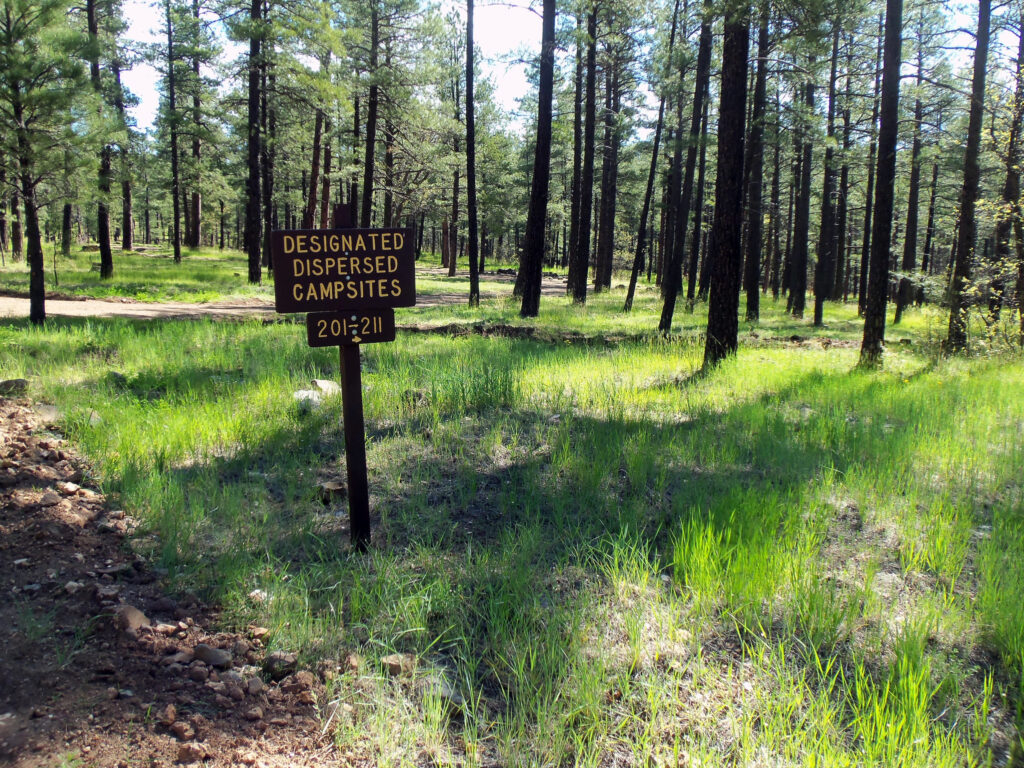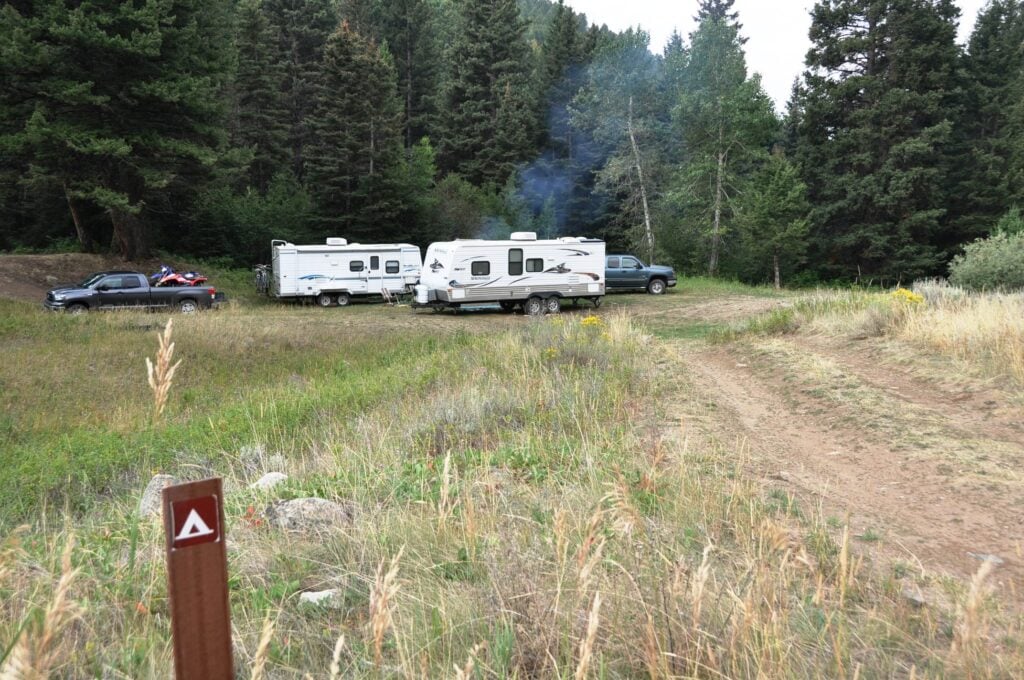
Dispersed camping in the Coconino National Forest. Photo via Public Domain (NPS, Flickr)
Pumphouse Wash (FR 237) Camping Loop 2 by Coconino National Forest, Ariz. is licensed under Public Domain Mark 1.0
Those that have been following my blog over the years know my wife and I are big fans of dispersed camping. We do it for a host of reasons like:
- It puts us close to the activities we want to enjoy on public land
- You do not need reservations. Come and go on your schedule
- The price is right, as the “campsites” are free
- Typically we don’t have neighbors
- The campsites are often very scenic
- We are surrounded by nature, not other RVs
- It allows us to enjoy the night sky as there is seldom any light pollution
This is RVing!
Dispersed camping refers to camping on public land in places outside of a designated campground. This means there are usually no amenities like at a campground. Some popular dispersed camping areas may have toilets. You will need to come fully prepared and self-contained. It also means you will need to leave no trace. You must pack out everything that you brought in, including all trash.
This style of camping gives RVers the freedom to get out and camp on some of the most beautiful undeveloped (and unspoiled) land this country has to offer. You do it on your own schedule and terms. Isn’t that what RVing was meant to be?

Photo by author (Dave Helgeson)
Learn where dispersed camping is allowed
Two of the largest public land agencies that allow dispersed camping are the United States Forest Service (USFS), and Bureau of Land Management, often referred to as the (BLM).
How much public land is available for dispersed camping between the USFS and BLM combined? The two agencies oversee 437.3 million acres of the 2.27 billion acres of land in the entire United States. This equates to over 19% of the whole country. That’s a whole lot of dispersed camping opportunities!
Is Boondocking and Dispersed Camping the Same Thing?
Finding boondocking sites takes a little planning, research, and effort. Most importantly, it means using the right terminology when inquiring where you can boondock with your RV (or tent). View a public land agency’s website and perform a search for “boondocking.” You will likely end up with the message “No Search Results Found” across your screen. The reason is public land agencies (state and federal) use the terminology “dispersed camping” when referring to undeveloped campsites dispersed across the land they oversee. They do not use the term “boondocking.”
BLM land, National Forests and more can be found while planning your route on RV LIFE Trip Wizard. You can also get RV-safe GPS directions using the RV LIFE App With GPS. It’s also always a good idea to check out the street view and satellite view before you visit to get a better idea of what the back roads are like.
So the next time you want to discover your own secret hideaway on public land, perform an online search. Or, ask a ranger where you can enjoy dispersed camping. You will be talking their language!
Read more about free camping on public land:
- 7 Must-Haves For Boondocking In The Summer
- 14 Reasons Why I Would Rather Boondock
- Why You Should Become A Better Dry Camper
- 5 Boondocking Lessons: How To Camp In The Wild Like A Pro

Dispersed campsites are quickly becoming garbage dumps – so bad that authorities are shutting some of them down for no other reason. Your rule, “pack out what you bring in” is wholly inadequate. Since boondockers left all that trash, boondockers should clean it up. My rule is, “Pack out MORE than you pack in.” Specifically, I travel with a supply of garbage bags. I pack out one garbage bag MORE than I pack in. This takes little time or effort. In fact, declaring a bounty on trash can be fun. If everyone adopted this rule, the garbage problem would quickly disappear.
Definitely download the MVUM map for the area you are considering for dispersed camping. It will indicate which roads are legal for public travel and where dispersed camping is allowed.
Could anyone tell me and my husband where a BLM campsite is located in California near Anaheim or victorville? We are in our car but have been traveling and would love to find a free site on BLM land but we have had trouble. We have two big service dogs. We are tent campers and eventually we are upgrading to an RV. But for now, we are in a tent. Also we have to be able to drive into town. So hopefully these sites are not too far from a town?
There are several sections of BLM close to Victorville. The south end of Atoka Rd looks like several good options, Boulder Road north of town traverses a large section of BLM land and there is a large section of BLM land south / southwest of Emma Jean’s Hamburgers just on the outskirts of town. Use Outsideanalytics to view public land overlays on these areas.
Along with this type of camping, lets find a LP a/c unit.
Then we got it made without shade and a restful night.
shhh.
Yes. Dispersed camping is horrible. Trash, Guns, desolate areas, no views, no water, no power, no showers, horrible, nasty, buggy places.
You should not go.
Ever.
Stay at the KOA. 🙂
Thanks for the warning Scott! 😊😊😊😊😊